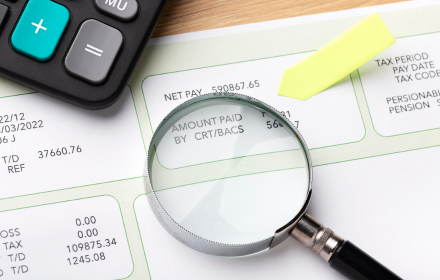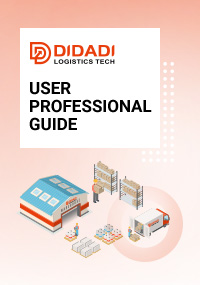Common Scams and Red Flags When Importing from China

China is known as the world’s manufacturing powerhouse — producing billions of products every year for global markets. For many entrepreneurs, sourcing from China has opened doors to incredible profits, product innovation, and business growth.
However, importing also attracts its share of risks. Alongside reputable suppliers are fraudulent operators who exploit inexperienced buyers through misleading listings, fake certifications, or simply by taking payments and disappearing.
Whether you’re an Amazon seller, e-commerce startup, or wholesale importer, understanding the most common scams and red flags in China sourcing is essential to protecting your business.
This guide breaks down the traps to avoid, how to identify suspicious behavior, and how to safeguard your supply chain from costly mistakes.
The first red flag is almost always price. If a supplier offers you a price that’s dramatically lower than the market average — especially for branded or complex products — it’s a warning sign.
Factories operate on thin margins. When someone quotes a price that seems impossible, one of three things is likely happening:
They are using inferior materials or counterfeit components.
They plan to change the product after receiving your deposit.
They don’t intend to deliver anything at all.
Before being tempted by “factory direct deals,” compare at least three to five suppliers for the same item. Reliable suppliers rarely undercut the market by more than 10–15%. If one offer looks suspiciously cheap, assume risk — not opportunity.
Many scams start with convincing websites and company profiles that look legitimate. Fraudsters often steal photos of real factories or show images of products they’ve never made.
How to verify legitimacy:
Check the business license: Every legitimate Chinese company has one. Ask for a copy and verify it through the official National Enterprise Credit Information Publicity System (accessible online).
Request video calls or factory tours: Real factories can easily show their premises, machines, or workers.
Compare contact details: A Gmail or Yahoo address instead of a company domain is a major red flag.
Check registration years: New “suppliers” with no trading history should be approached with caution.
If you’re sourcing high-value goods, it’s worth hiring a local agent or third-party auditor to physically verify the supplier’s existence before sending any money.
This is one of the oldest tricks in the book. A supplier sends a high-quality sample, wins your trust, and then delivers low-quality bulk goods that look similar but use cheaper materials or components.
By the time you discover the difference, the shipment has already arrived at your port, and payment is complete.
How to prevent it:
Use a written and signed specification sheet (with photos, materials, and measurements).
Attach the approved “golden sample” to your purchase order and require all production to match it.
Schedule pre-shipment inspections by an independent QC firm to confirm that bulk goods meet your sample’s standard.
Documentation is your best defense. Without it, you’ll have no leverage to claim a refund or replacement.
Some suppliers advertise branded goods — Apple accessories, Disney toys, or Nike clothing — at heavily discounted prices. These are almost always counterfeits.
Importing fake products can lead to customs seizures, Amazon account suspension, or even legal prosecution. Even if the factory claims the goods are “OEM surplus,” you should avoid them entirely.
Only work with suppliers who provide legitimate authorization letters or brand owner certificates — and verify them with the brand’s official representatives before proceeding.
If you’re developing your own private-label product, make sure you register your trademark early in both your destination country and China. It’s common for opportunistic sellers to register your brand name domestically once they see it gaining traction overseas.
Another common scam involves forged certificates. A supplier may claim that their products meet CE, FCC, FDA, or ISO standards — but in reality, the documents were created using templates or Photoshop.
Fake compliance documents can cause serious problems during customs clearance or Amazon FBA verification.
How to protect yourself:
Request original test reports from recognized labs such as SGS, Intertek, or TÜV.
Verify the report’s number and issue date directly with the testing agency.
Avoid certificates with mismatched product names or outdated references.
If a supplier refuses to share test reports or provides unclear documentation, that’s your signal to walk away.
Payment scams are extremely common in cross-border trade. The most frequent scenarios include:
Changed bank account scams: Midway through a deal, the supplier claims their “finance department changed the account” — but the new account belongs to a fraudster.
Personal account payments: They ask you to send money to an individual rather than a company.
Western Union or cryptocurrency requests: These payment methods are untraceable and often used by scammers.
Safe payment practices:
Always pay through the registered company’s account that matches the business license.
Double-check the bank name, SWIFT code, and beneficiary information.
For large orders, use secure platforms like Alibaba Trade Assurance or Letter of Credit through your bank.
Some frauds happen not with the product — but with shipping quotes. Unscrupulous agents may offer extremely low freight rates and then demand extra payments after your goods are in transit, threatening to hold or delay delivery.
Others misdeclare cargo types, causing customs issues or unexpected fines for the importer.
The safest approach is to work with a reputable freight forwarder or 3PL who provides transparent, all-inclusive pricing — including customs, duties, and last-mile delivery.
Professional logistics companies in China, such as DIDADI Logistics, ensure documentation, labeling, and packaging are consistent with your declared shipment type, reducing risk of customs disputes or hidden surcharges.
Some small or newly registered suppliers overpromise their capabilities just to secure your first order. Once they receive your deposit, communication slows, deadlines slip, and excuses multiply: “machines are under maintenance,” “customs is delayed,” “we need more time for materials.”
Sometimes the factory never even starts production.
Avoid this by setting clear timelines and payment milestones:
Pay only after confirming production with photos or videos.
Use partial payments tied to progress stages.
Keep all communication within a traceable channel (email, Alibaba chat, or WeChat business account).
Professional suppliers understand these processes and won’t object to structured payments.
While not always a “scam,” neglecting packaging requirements is a serious quality risk. Some exporters cut corners on packaging to save costs, leading to damaged goods or non-compliance with FBA standards.
Improper labeling (wrong barcodes, missing warnings, incorrect country of origin) can result in warehouse rejection or customs holds.
Ensure your packaging design and labeling requirements are written clearly in your purchase order. Before shipping, request photos of finished cartons and pallet labeling. A professional logistics provider can double-check these details before export.
To stay safe when sourcing from China, combine caution with structure:
Verify every supplier’s registration before sending payment.
Communicate clearly in writing with signed specifications.
Use official payment channels tied to company accounts.
Avoid branded or trademarked goods unless you have authorization.
Work with experienced local partners for inspection, warehousing, and shipping.
Each of these steps may seem small — but together, they create a system that makes you much harder to scam.
China remains one of the best places in the world to manufacture and source products — but only if you approach it with preparation and caution.
Most scams can be avoided simply by verifying details, documenting agreements, and refusing to cut corners for short-term savings.
With the right systems — and trustworthy partners managing the logistics side — importing from China can be both safe and profitable.
Stay skeptical of deals that seem “too good to be true,” document everything, and surround yourself with professionals who protect your interests from factory floor to final delivery.
Smart sourcing isn’t about luck — it’s about structure.
Even after choosing the right suppliers, shipping remains a critical stage where transparency and professionalism matter most.
Working with an experienced China-based 3PL and freight forwarder ensures that your products are consolidated, packed, and exported correctly — with full visibility on routes and customs documentation.
At this stage, DIDADI Logistics supports importers by handling:
Supplier pickup and warehousing
Repacking and export labeling
Customs documentation and DDP delivery to major Amazon FBA warehouses in the U.S. and EU
Regular shipment updates and reliable transit coordination
By maintaining communication between your suppliers and destination markets, you minimize the risk of shipping errors, hidden fees, or communication breakdowns that scammers often exploit.
Recommended Reading















